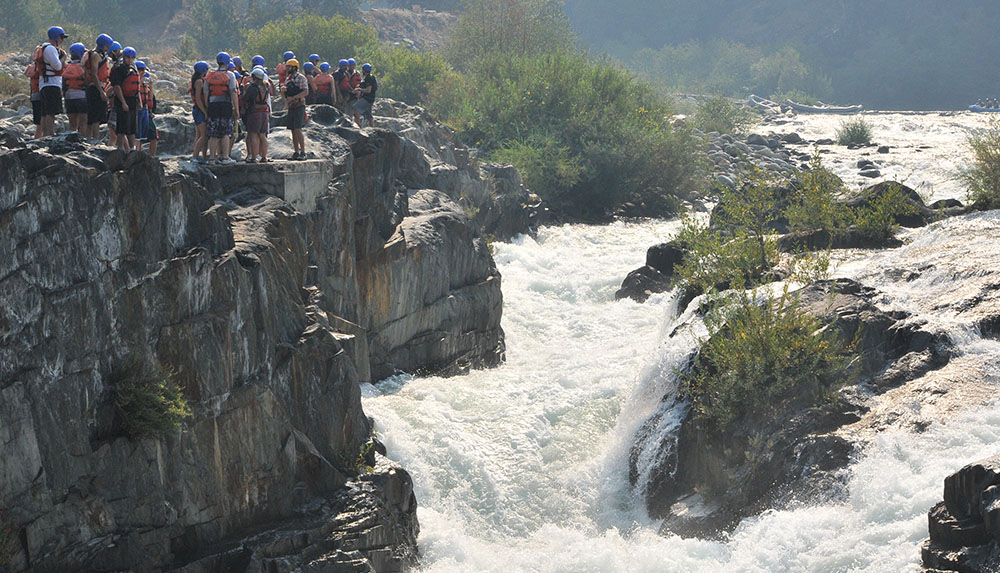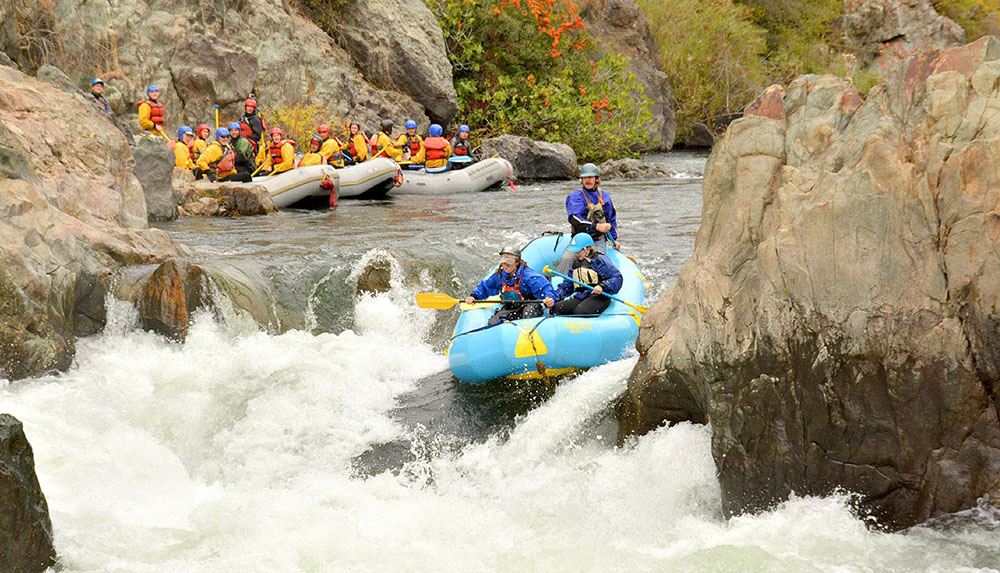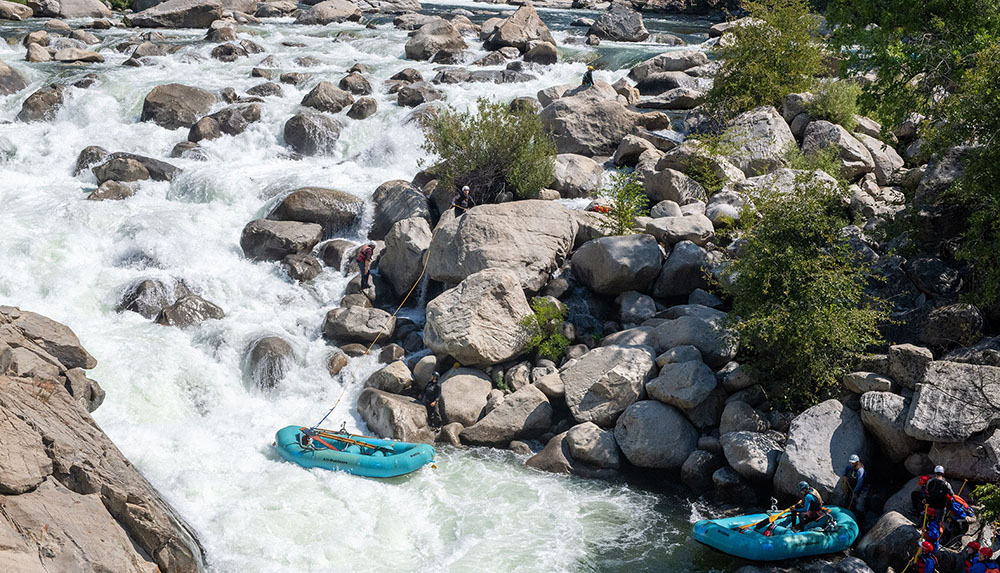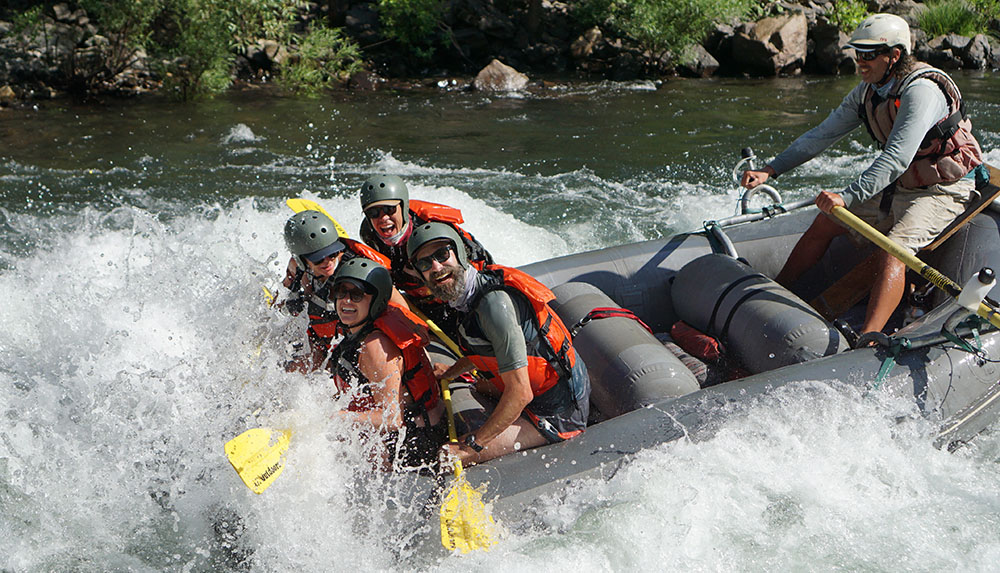River Moves and Scenarios – A Rafting Glossary
Posted August 8, 2024 by Reily Schultz
Wrap, surf, dumptruck… These everyday terms can mean something quite different to a whitewater rafter. Whether you’re joining us for your first day on the river or your 100th, these are a few rafting moves you might want to be familiar with.
River Moves & Scenarios
Line
As you approach a rapid, your guide will be looking for the preferred route. Guides will visualize a line tracing the route to maneuver through the rapid and follow it as you move downstream.
Scout
Guides and sometimes guests will get out of the raft to get a better look at an upcoming rapid. Guides will scout larger rapids to determine the best way to run them, and guests often scout rapids to determine if they are comfortable running the rapid, or if they would prefer to walk around it.

Ferry
To ferry is to move across the river without much downstream movement. This is typically done to set the boat up for a successful ‘line’ through the next rapid.
Boof
A ‘boof move’ is when rafts intentionally bump into rocks to hit a cushion of water, resulting in a big splash and redirection of the boat. The term is an onomatopoeia – seemingly based on the sound you would make to describe the move.
Eddy out
Eddying out means leaving the river’s main current and paddling into an eddy. Think of it like a time out in a sports game – a quick break before getting back to the rapids. Rafters will eddy out and rest in the calmer water to wait for other boats in the pod, or to pull over and get out of the raft safely on shore.

Wrap
Rafts moving downstream can run into obstacles and rocks scattered throughout the river. Sometimes a raft sits an obstacle sideways and wraps around it, held in place by the force of the downstream current.
Perch
Less like the fish, and more like a bird – when a raft gets held up on a partially submerged rock causing the boat to stop its forward motion and just sit on top of the obstacle.
Portage
Some rapids are considered too big or too risky to run, prompting rafters to get out of the boats and walk around the rapid on shore to get back on the water in a calmer location.

Stuck
This is one term that means exactly what it sounds like. When the raft ends up in a situation it cannot free itself from on its own, whether it be on a rock, other obstacles, or in a hole, it is considered stuck.
Flip
A flip happens when the raft hits a wave or obstacle in a way that causes the boat to flip completely upside down and toss its rafters into the water. (When Your Raft Flips – What to Do & Not Do)
Surf
When an obstacle creates a ‘hole’ in the river, it often creates a large recirculating wave above it. Rafters, kayakers, and paddle boarders will often paddle upstream into the wave and ‘surf’ as a surfer will do on an ocean wave.

Dumptruck
A “dumptruck” occurs when the raft remains right-side-up, rather than flipping, after hitting a rapid or obstacle that causes all of the rafters to fall out into the river.
Must-make move
As you approach a rapid, there are often a few ‘moves’ you need to complete to successfully run it. Hitting these moves can mean the difference between a clean line through a rapid, or getting stuck or flipped by nearby obstacles. If you think of it in terms of driving, a must-make move could be merging to the right lane to take the correct freeway exit. Miss it and you have much more work ahead of you!
Whether you’re a first time rafter or a whitewater veteran, understanding these rafting moves and scenarios will enhance your overall experience on the river. Being familiar with terms like surf, ferry, and eddy out can help you feel more prepared and confident the next time you’re out on the water. Happy rafting!